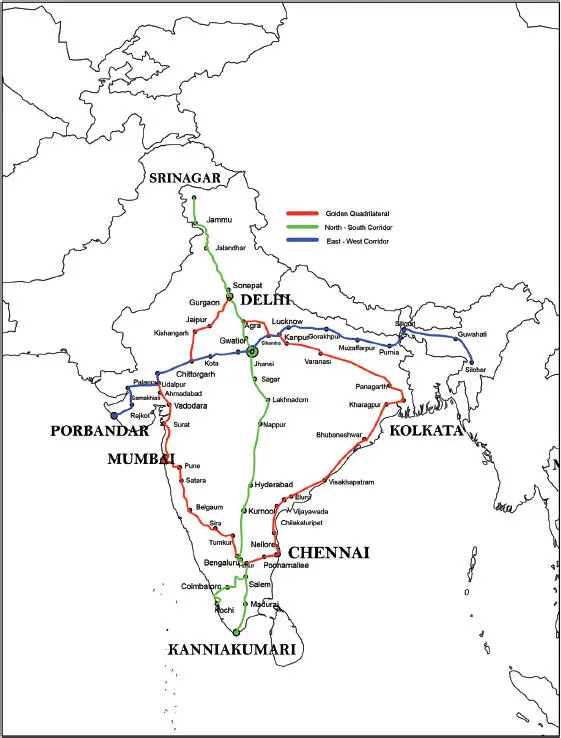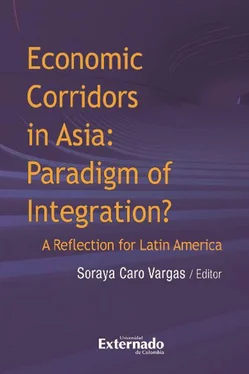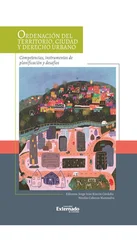1. THEORETICAL DISCOURSE ABOUT ECONOMIC CORRIDORS
The economic aspects of corridors have been amply covered in the theoretical constructs. Whebell (1969)proposed a corridor-centered economic landscape and stated that it is a useful instrument for urbanization as it creates sustainable methods for populating the space followed by commercial agriculture and thereafter a surge in communication and connectivity, leading to the emergence of metropolitan centers ( Whebell, 1969; pages. 1-26). Whebell while applying his argument primarily through metropolitanism, had failed in terms of the development of sub-urban landscapes and the development of satellite townships which form the bed rock of production, services and investment. Kathy Pain, while arguing for the development of corridors, puts cities, corridors and transport into one economic space with each influencing the other ( Pain, 2002). There is another argument to the economic corridor which debates it in the context of Development Axes (DA) theory. DA theory proposed by Hilhorst (1972), defined it as connecting and integrating two or more growth poles or centers across continents, trans-national or sub national levels ( Hilhorst, 1972). While furthering the Hilhorst argument, Richardson (1978), discussed that this network would facilitate economic agglomeration, bring about price parity and cut down on freight costs and in turn trigger economies of scale of activities ( Richardson, 1978, pp. 133-152). It will put the place/node/city along the axes in higher levels of efficiency and will strengthen each endpoint. Stephanie Petrella (2018)proposes an economic space which includes transport corridors, adjoining production centers, and cities. These three economic spaces provide technology, labor, consumption and innovation which is critical to sustain economic growth ( Petrella, 2018). Ron Martin (1999)has argued that economic geography plays a critical role for the development of any region be it international, regional or at the local national level because of mathematical economics of imperfect competition, increasing returns to investment and multiple equilibria, leading to agglomeration of economic activity in select regions ( Martin, 1999; pp. 387-391). This paper draws from the Ron Martin concept and argues that the development of corridors at the national level does have its utility at sub regional levels also.
Brahmawong (2010), however, raised caution regarding the role of transport and economic corridors and advocated that economic development as a result of economic corridors might help in economic growth and raise national income but would also result in the depletion of natural resources, adverse environmental conditions and diminished livelihood ( Banomyong, 2010). While the narratives related to economic corridors do endorse the need for agglomeration of resources and the utility of urban spaces so that economic production and consumption can be facilitated, they argue nevertheless that, economic corridors must be complemented by issues such as labor availability, capital investment and entrepreneurial capabilities so that the development can be comprehensive and reach the larger population.
India has embarked, with this objective in mind, on an ambitious project of development and bringing about the effective utilization of resources. Therefore, various initiatives have been undertaken to integrate production centers through highways and ports while also facilitating transportation so that labor can move without impediments. However, the projects are expected to face challenges which will be discussed later in the chapter. This paper uses empirical data and evaluates it for its efficacy and utility. It further assesses it based on the available documents about the prospects and challenges involved. This paper is based on primary documents and not on field interviews.
2. INDIA’S ECONOMIC CORRIDORS AND HIGHWAY NETWORKS
India has vast networks of highways covering the length and breadth of the geography which have helped in developing the industry and also providing employment opportunities. Since the liberalization of the economy in 1990s, it was felt that there was a need to emulate the export-ordinated industrialization through liberalized procedures and improvements on the ease of the business economy. To meet the infrastructure deficit, a number of initiatives were taken by previous governments and subsequently, India has embarked on the Golden quadrilateral project to promote seamless connectivity across the north, south, east and western regions of India. Given the fact that there have been issues related to the cost efficiency, hidden costs and also challenges with regard to available skilled labor, it was imperative for India to bring the different economic centers including the older ones such as Surat and Kolkata and integrate them with new centers such as Bangalore, Hyderabad and Kochi. This seamless integration through the highway network would create a lifeline and also help in the equitable distribution of resources, manpower and industries.
In order to promote the industrial sector and also work on the integrated inland and highway networks, India has started work on building highway networks, and also developing ports. As part of this project, it has announced the Sagarmala project. However, the earlier Sethusamudrum project was proposed between India and Sri Lanka so that the Indian ports could be engaged for the transit shipment which was destined for East Asia. The project was criticized because of religious aspects as it was believed that construction of such a project would destroy the Setu (bridge) which was built by Lord Rama while attacking Lanka and fighting the war with Ravana who had kidnapped Rama’s wife –Sita. The project was shelved because of concerns from both countries regarding the viability and economic sustainability of such a project.
Following the debacle of the Sethusamudrum project, India under the new regime of Modi proposed the Sagarmala project. This project is aimed at building small and medium size ports along India’s coastline. The conceptualization was achieved in 2015 and reference was made under the National Perspective Plan (NPP). The objective was to undertake comprehensive development of India’s coastline and maritime sector through sustained efforts which included foreign investment, Public-Private partnership as well as the participation of the private sector in the development plan. According to rough estimates and the volume of exports, 95 per cent of India’s trade (excluding oil imports) is undertaken through sea ports. The economic zones have been created or are in the developmental phases to promote economic activities including services in ports such as Jawaharlal Nehru Port Trust (JNPT), Sikka Port, Mundra Port, and Hazira Port, etc. ( Sagarmala Project, n.d.).
MAP 1: NATIONAL HIGHWAY DEVELOPMENT PROJECT

Source: Created by author based on the Ministry of Surface Transport and Shipping website (n.d).
These efforts are meant to address structural challenges but there are challenges with regard to labor efficiency, skill and wages. For instance, the operational efficiency of Indian ports lags in terms of the global average as it is four days of turnaround time required for offloading or loading of cargo while the international average is 1-2 days. A few select private sector ports like Gangavaram and Mundra have clocked a turnaround time of 48 hours. Another challenge that the port infrastructure faces in India is with regard to connectivity to the last mile. More than 87 per cent of Indian freight have to face ‘idle time’ (time between offloading and transit) because of capacity constraints and the lack of connectivity between production and consumption centers. Along the coastline the transport and ferry services are still better, and freight transport have also improved, but its share is only six per cent of the transport. Freight costs can be reduced through ‘shifting movement of industrial commodities like cement, coal, iron ore, and steel to coastal and inland waterways’ ( Sagarmala Project, n.d.).
Читать дальше













